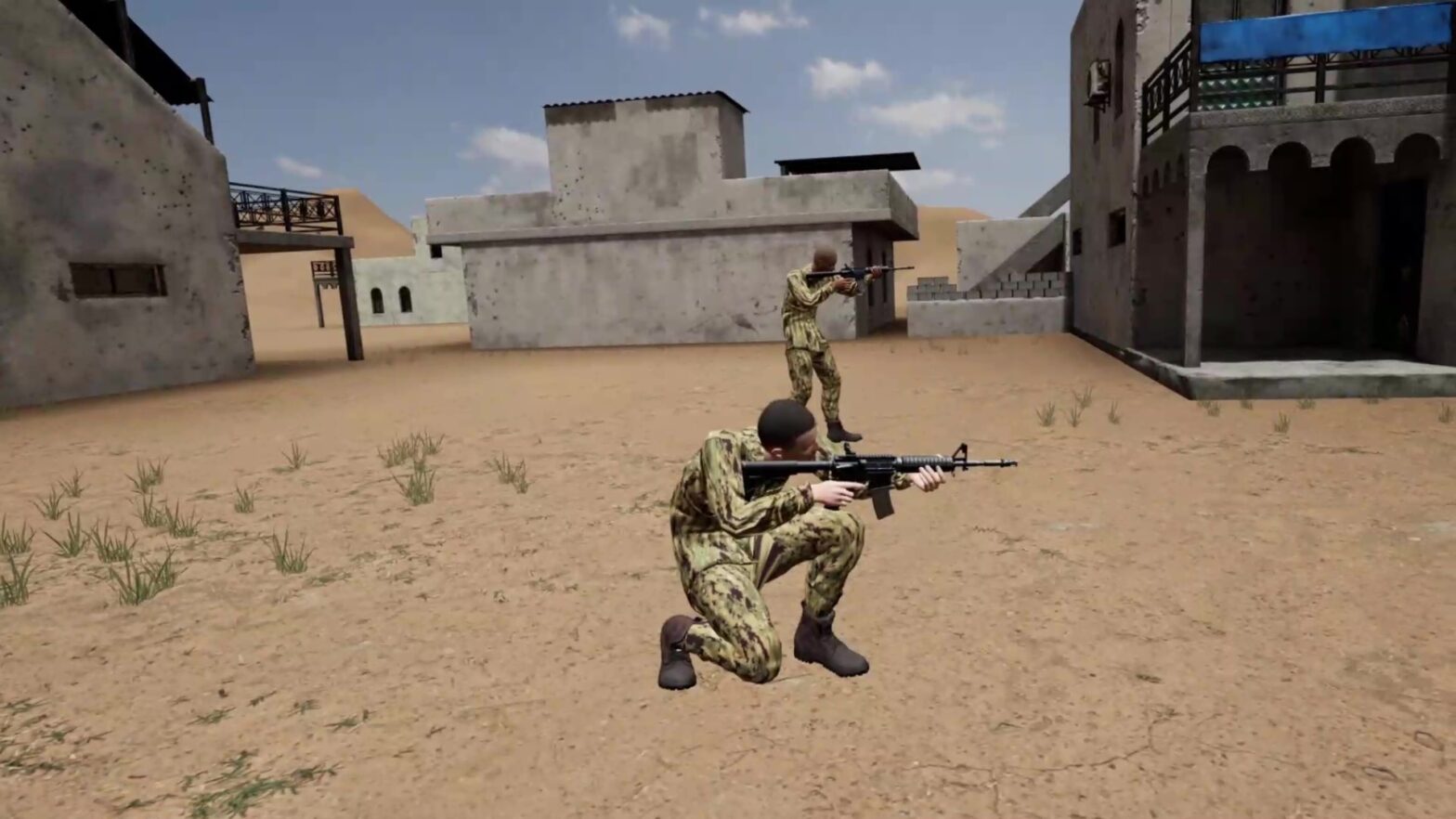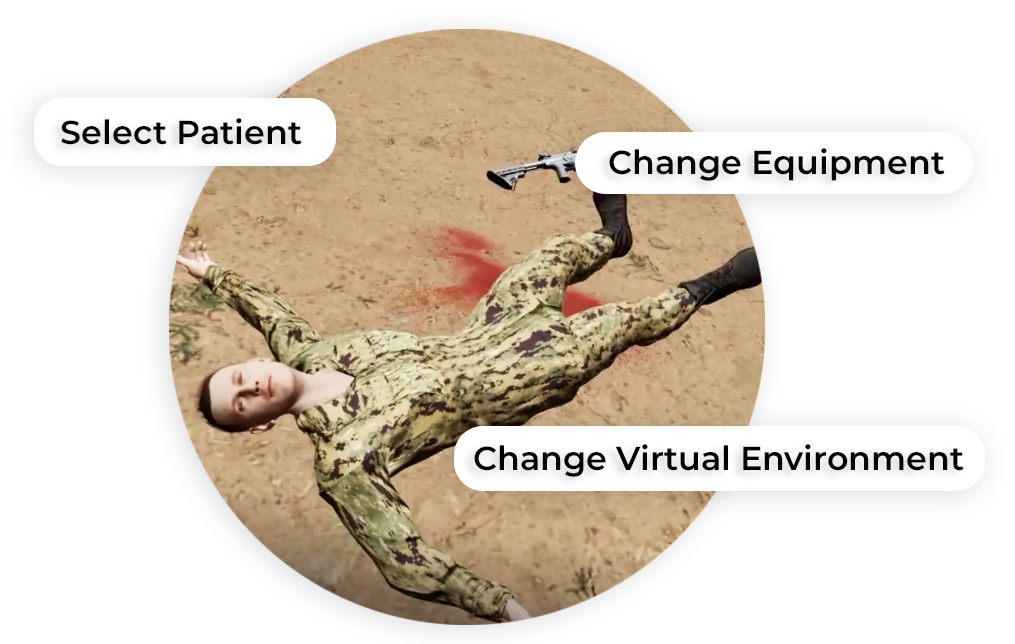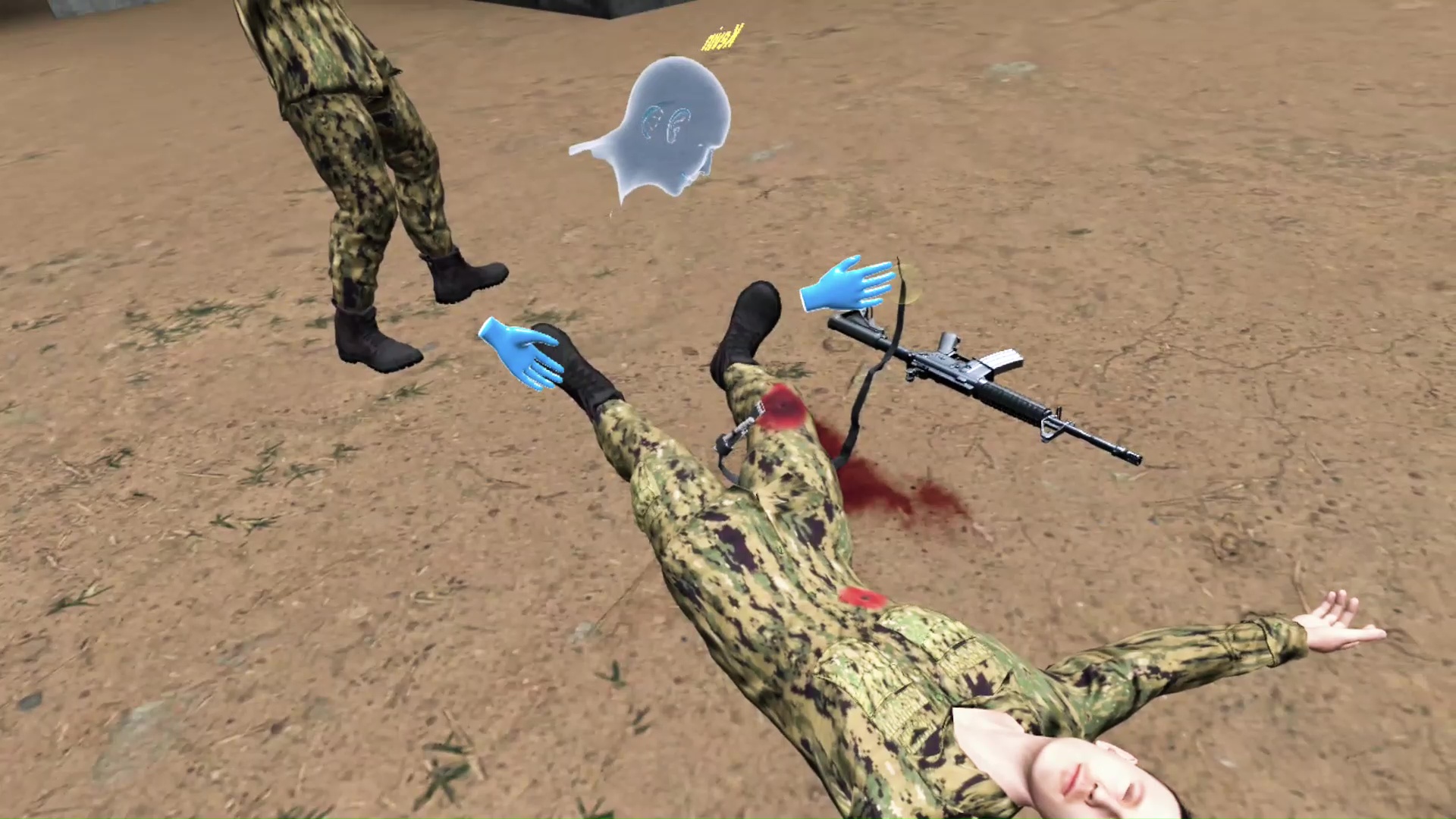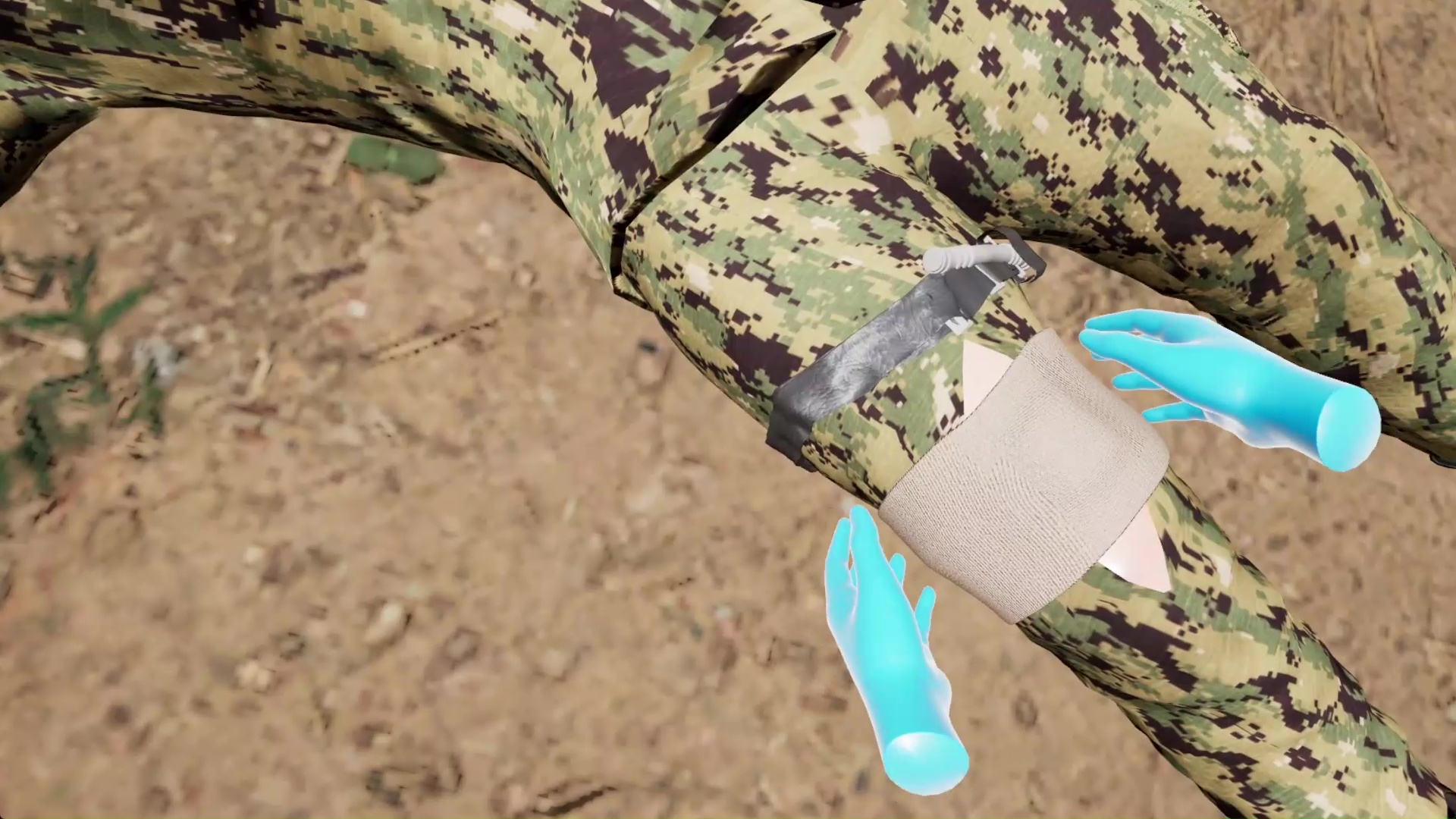Hemorrhage Control – TCCC
A fellow soldier has suffered a serious injury in combat. Immediate hemorrhage control measures must be taken to save his life. As part of the team, take steps to control his bleeding till dedicated medical attention can be made available.
This multiplayer open scenario VR session is set in realistic interactive environments. It is designed to provide learners practice in performing hemorrhage control measures in combat situations.
- Identify the severity of the injury
- Secure patient in safe area for hemorrhage control procedure
- Display knowledge of correct application of C-A-T tourniquet
- Ensure correct placement of tourniquet
- Check and confirm elimination of distal pulse
- Pack and seal wound using standard technique
- Place occlusive dressing on sucking chest wound

- U.S. Department of Defense. (2024). Tactical Combat Casualty Care Handbook, Version 5. Retrieved from https://api.army.mil/e2/c/downloads/ 2023/01/19/31e03488/17-13-tactical-casualty-combat-care-handbook-v5-may-17-distro-a.pdf
Customize Your Program
Get rid of the editor. Adopt in-VR customization.
MedVR Education is bringing to you in-VR customization that will enable you to put together your own simulations by making selections from a wide range of feature choices.
- Select patient from a diverse background
- Choose preferred virtual environment
- Configure patient vitals
- Define simulation duration
- Create patient history and train with AI-Humans
- Customize session-end debriefing
- …..many more to come

 Multi-playerSessions
Multi-playerSessions Physics-based Interactions
Physics-based Interactions
Core Skills Training

Hemorrhage Control - TCCC
As part of this multiplayer open scenario, the learner will begin by identifying the severity of the wounds and securing the patient in a safe zone. The learner will then secure the CAT tourniquet on the affected extremity, ensuring no more than three finger space between the wound and tourniquet. This will be followed by the learner ensuring the elimination of the distal pulse and packing the wound to control the bleeding. Identify the gunshot wound to the chest and place an occlusive dressing to prevent the inflow of air to the lung cavity. This scenario is set in a photorealistic environment and all necessary affordances are made available to assist learners in performing their tasks with efficiency and effectiveness.
Debriefing
End-of-task debriefing to assess one’s performance, evaluate actions, and get the most out of the training. Examples of topics being touched upon in the debriefing include the following:
- Thorough patient assessment
- Completion of necessary steps
- Correct medication administration to patient
- Sequential completion of task
- Execution of time-sensitive tasks






